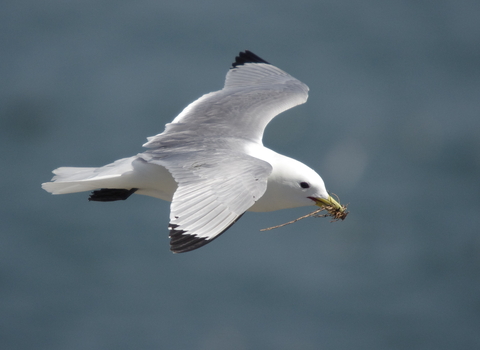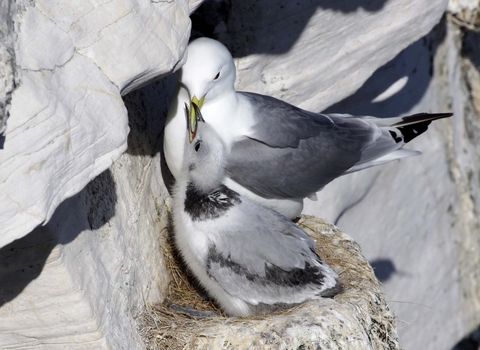
Kittiwake ©James Rogerson

Kittiwake ©Margaret Holland
Kittiwake
A pretty, little gull, the kittiwake can be spotted nesting in colonies on clifftops and rock ledges around the UK's coast. It spends the winter out at sea.

Kittiwake ©James Rogerson

Kittiwake ©Margaret Holland